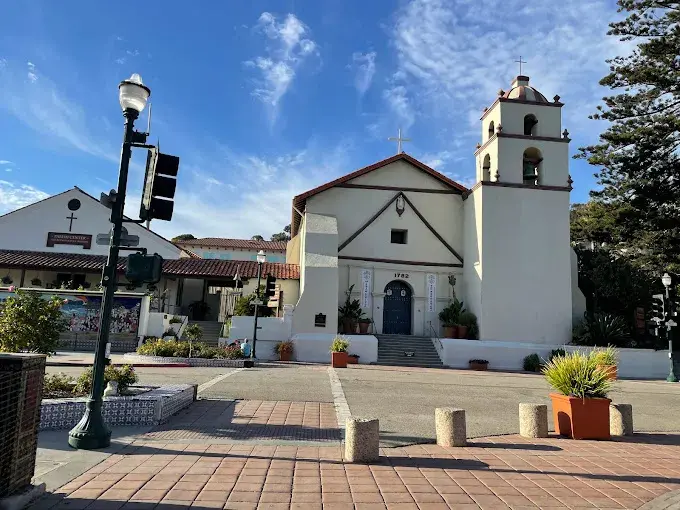Historical Harmony: Exploring Mission Basilica San Buenaventura 1782 in Ventura, CA

As the saying goes, ‘history is written in stone,’ and nowhere is this truer than at the Mission Basilica San Buenaventura in Ventura, California. You’re about to embark on a journey into the heart of California’s history, discovering a monument that’s brimming with architectural grandeur and cultural imprints from its inception in 1782.
Under the guidance of Saint Junipero Serra, the mission stands as a testament to the indomitable spirit of California’s pioneers. It’s a place where the old world meets the new, where the echoes of the past blend seamlessly with the present. This fusion of times is what gives the mission its unique charm, inviting you to uncover the stories etched in its corridors and walls.
Yet, the mission holds more than meets the eye: a narrative yearning to be told, a secret waiting to be unraveled. Will you be the one to decode it?
Architectural Grandeur: 1782 Beginnings
As you step into the Mission Basilica San Buenaventura, you’re instantly swept back to 1782, marveling at the architectural grandeur that has stood the test of time.
You’ll notice the mission’s hand-hewn wooden beams, a testament to the dedicated craftsmanship of the Chumash Indians who built it under the supervision of Franciscan padres. The weathered adobe walls whisper stories of a bygone era.
Gaze at the intricately designed altar, a beautiful mix of both Spanish and Moorish influences. Here, you’re part of a community that values history, appreciating the preserved architectural elements that make this mission unique.
As you explore each corner, you’ll feel a sense of belonging, connecting with those who’ve marveled at this architectural wonder for centuries.
Cultural Imprints: Mission’s Evolving Legacy
Delving deeper into the Mission’s evolving legacy in Ventura, you’ll discover a rich tapestry of cultural imprints that reflect the diverse influences shaping its history. These imprints have left an indelible mark, contributing to the Mission’s present-day identity.
- Historical Influences
- The Spanish settlers’ arrival, their architectural style, and religious practices significantly shaped the Mission’s character.
- Indigenous Chumash people’s contribution, their art, language, and traditions have also been woven into the fabric of the Mission.
- Cultural Shifts
- The Mexican period brought a shift in governance, influencing societal norms and practices.
- The American era ushered in modernization, further diversifying the cultural landscape.
- Present Legacy
- Today, the Mission stands as a testament to this multi-faceted history, a place where all can connect with a shared past.